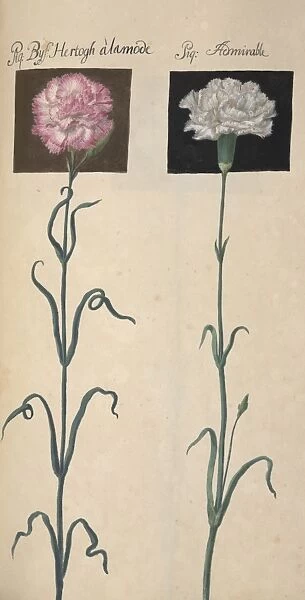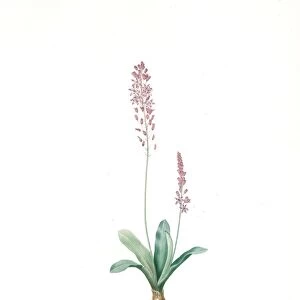Home > Europe > United Kingdom > England > London > Museums > Natural History Museum
Carnation. Illustration from Flora Exotica (1720) by Johann Gottfried Simula
![]()

Wall Art and Photo Gifts from Mary Evans Picture Library
Carnation. Illustration from Flora Exotica (1720) by Johann Gottfried Simula
Illustration from Flora Exotica (1720) by Johann Gottfried Simula. Held in the Botany Library at the Natural History Museum, London
Mary Evans Picture Library makes available wonderful images created for people to enjoy over the centuries
Media ID 8580823
© Mary Evans Picture Library 2015 - https://copyrighthub.org/s0/hub1/creation/maryevans/MaryEvansPictureID/10709388
Carnation Caryophyllaceae Caryophyllales Dianthus Eudicot Flora Exotica Angiospermae Dicot Dicotyledon Magnoliophyta
EDITORS COMMENTS
This exquisite illustration is taken from "Flora Exotica," a botanical masterpiece published in 1720 by the renowned German botanist Johann Gottfried Zinn and illustrated by the skilled hand of Johann Gottfried Simula. The illustration showcases the captivating beauty of the Carnation (Dianthus caryophyllus), a beloved flower in the Caryophyllaceae family, which is part of the larger order Caryophyllales. As a long-standing favorite in gardens and bouquets, the Carnation is an angiosperm, a type of flowering plant that produces seeds enclosed in an ovary. This particular specimen is identified as a dicot, a type of angiosperm characterized by having two seed leaves (cotyledons) upon germination. The Carnation is classified as an eudicot, a subgroup of dicots that includes a large number of flowering plants. The term "eudicot" is derived from the Greek words "eu," meaning good, and "dicotyledon," meaning two seed leaves. The Carnation's elegant pink blooms are a testament to its status as a flowering plant, belonging to the class Magnoliophyta, which includes all flowering plants. This stunning illustration, held in the esteemed Botany Library at the Natural History Museum in London, highlights the intricate details of the Carnation's petals, veins, and stamens, providing a glimpse into the botanical world of over three centuries ago. The delicate pink hue of the flower, combined with its distinctive fragrance, continues to captivate and inspire artists, gardeners, and naturalists alike. This illustration serves as a reminder of the rich history of botanical exploration and the enduring allure of the natural world.
MADE IN AUSTRALIA
Safe Shipping with 30 Day Money Back Guarantee
FREE PERSONALISATION*
We are proud to offer a range of customisation features including Personalised Captions, Color Filters and Picture Zoom Tools
SECURE PAYMENTS
We happily accept a wide range of payment options so you can pay for the things you need in the way that is most convenient for you
* Options may vary by product and licensing agreement. Zoomed Pictures can be adjusted in the Cart.













